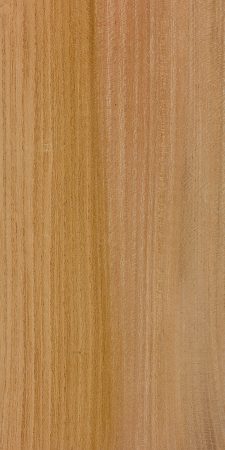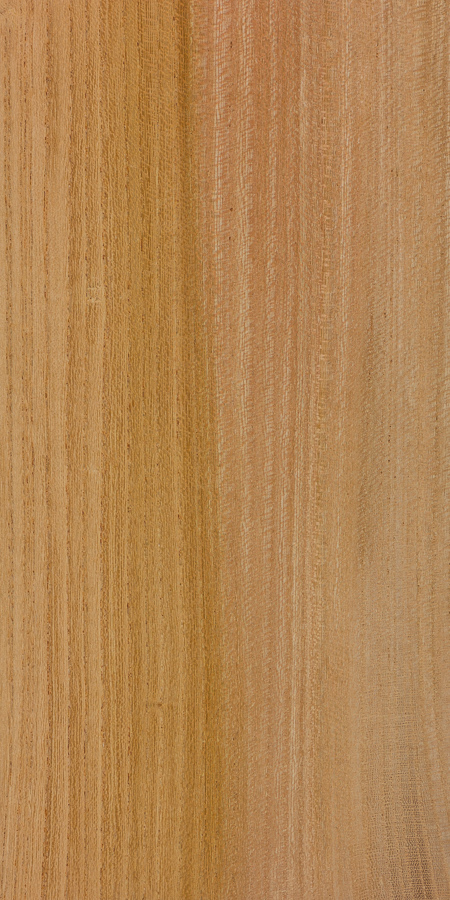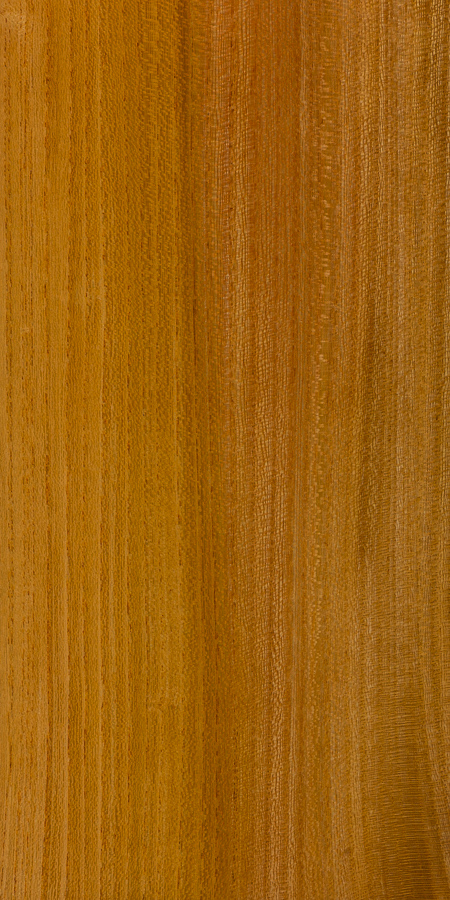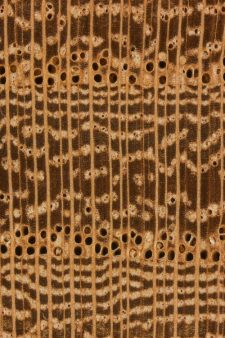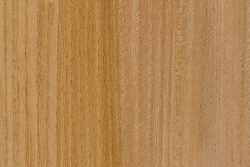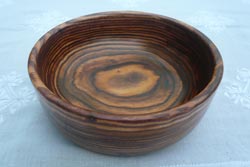DATA SOURCE(S): 16,43,47,48
Common Name(s): Keyaki, Japanese elm, ケヤキ, 榉树, 느티나무
Scientific Name: Zelkova serrata
Distribution: Japan, Korea, and eastern China
Tree Size: 65-100 ft (20-30 m) tall,
2-3 ft (.6-1 m) trunk diameter
Average Dried Weight: 38.7 lbs/ft3 (620 kg/m3)
Specific Gravity (Basic, 12% MC): .55, .62
Janka Hardness: 1,040 lbf (4,640 N)
Modulus of Rupture: 14,020 lbf/in2 (96.7 MPa)
Elastic Modulus: 1,556,000 lbf/in2 (10.73 GPa)
Crushing Strength: 7,400 lbf/in2 (51.1 MPa)
Shrinkage: Radial: ~5%, Tangential: ~8%,
Volumetric: ~13%, T/R Ratio: ~1.6*
*Shrinkage values are for the subspecies Z. serrata var. tarokoensis
Color/Appearance: Heartwood is light to medium golden brown, usually distinct from the lighter yellowish brown sapwood. Quartersawn sections can display minute ray fleck patterns due to the wide rays. Overall appearance is very similar elm (Ulmus spp.).
Grain/Texture: Grain varies from straight to irregular and interlocked.
Rot Resistance: Rated as very durable, with good insect resistance.
Workability: Easy to work with both hand and machine tools. Turns, glues, and finishes well.
Odor: No characteristic odor.
Allergies/Toxicity: Besides the standard health risks associated with any type of wood dust, no further health reactions have been associated with keyaki. See the articles Wood Allergies and Toxicity and Wood Dust Safety for more information.
Pricing/Availability: Although used extensively in the past, keyaki is generally not available commercially nowadays.
Sustainability: This wood species is not listed in the CITES Appendices, but is assessed by IUCN as being near threatened. Although the species as a whole is not threatened, certain areas where the tree occurs, specifically in China and Korea,[1]Bétrisey, S., Song, Y. & Kozlowski, G. 2018. Zelkova serrata. The IUCN Red List of Threatened Species 2018: … Continue reading have seen a decline in habitat quality and extent of occurrence.
Common Uses: Used domestically within its natural range, usually for decorative purposes such as furniture, carvings, and lacquer works. Currently, the wood is reserved for historically-accurate restoration of ancient temples and shrines within its natural range.[2]Timbers of the World: Vol. 2 (p. 34). (1980). United Kingdom: TRADA
Comments: In addition to this species, there is also a variant endemic to Taiwan (Zelkova serrata var. tarokoensis) with markedly higher density.
Images: Drag the slider up/down to toggle between raw and finished wood.
(Note that the wood pictured below is of related Zelkova carpinifolia, pictures of this actual species are forthcoming.)
Identification: See the article on Hardwood Anatomy for definitions of endgrain features.
Porosity: ring porous
Arrangement: earlywood pores typically one (or two) rows wide, latewood pores in wavy tangential bands (ulmiform)
Vessels: medium to very large earlywood pores, small to medium latewood pores; tyloses common
Parenchyma: vasicentric, confluent
Rays: wide width, wide spacing; rays are visible without magnification
Lookalikes/Substitutes: Bears a very close resemblance to elm (Ulmus spp.).
Notes: None.
Related Content:
References[+]
| ↑1 | Bétrisey, S., Song, Y. & Kozlowski, G. 2018. Zelkova serrata. The IUCN Red List of Threatened Species 2018: e.T61967528A61967548. https://dx.doi.org/10.2305/IUCN.UK.2018-2.RLTS.T61967528A61967548.en. Accessed on 18 April 2024. |
|---|---|
| ↑2 | Timbers of the World: Vol. 2 (p. 34). (1980). United Kingdom: TRADA |

